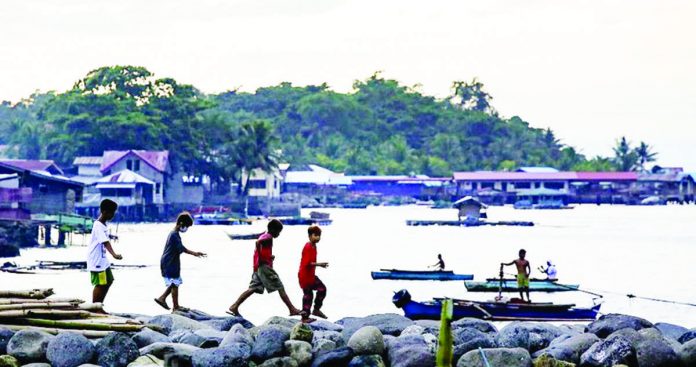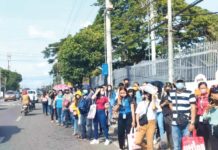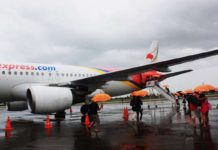
ILOILO City – Report suspected human trafficking incidents to the authorities, the Regional Inter-Agency Council Against Trafficking (Regional IACAT) – Violence Against Women and Children (VAWC) in Western Visayas urged the public.
As of June 30 this year, 29 human trafficking victims in Western Visayas were given a total of P210,405 in assistance.
Under the Expanded Anti-Trafficking in Persons Act of 2012, trafficking in persons is illegal and a violation of human rights. It has three inter-related and interdependent elements:
* it involves the recruitment, obtaining, hiring, providing, offering, transportation, transfer, maintaining, harboring, or receipt of persons with or without the victim’s consent or knowledge, within or across national borders;
* it is committed by use of threat, or use of force, or other forms or coercion, abduction, fraud, deception, abuse of power or of position, taking advantage of the vulnerability of the person, or the giving or receiving of payments or benefits to achieve the consent of a person having control over another person; and
* it is done for the purpose of exploitation or the prostitution of others or other forms of sexual exploitation, forced labor or services, slavery, involuntary servitude or the removal or sale of organs
The recruitment, transportation, transfer, harboring, adoption or receipt of a child for the purpose of exploitation or when the adoption is induced by any form of consideration for exploitative purposes shall also be considered as “trafficking in persons” even if it does not involve any of the means mentioned above.
In Western Visayas, here is the breakdown of the 29 victims for this year’s first semester:
* online sexual abuse and exploitation of children (OSAEC) – six
* prostitution – three
* forced labor – 12
* sexual exploitation – two
* involuntary servitude – one
* illegal recruitment – four
* intercepted/differed from boarding – one
Yesterday, the Regional IACAT-VAWC, together with the Provincial Committee Against Trafficking – Violence Against Women and their Children (PCAT-VAWC), conducted a media forum on Anti-Trafficking in Persons and Online Sexual Abuse and Exploitation of Children.
This was in line with the July 30 observance of World Day Against Trafficking in Persons with the theme “Reach every victim of trafficking, leave no one behind.”
The forum aimed to raise awareness on human trafficking and to promote and protect the rights of trafficked victims.
In 2022, 71 victims of human trafficking were recorded in Western Visayas, based on data presented by Xzyrabelle M. Servento, secretariat of the Regional IACAT-VAWC.
Servento said the 71 were given assistance by the Department of Social Welfare and Development (DSWD).
DSWD released a total of P458,000. The victims availed themselves of livelihood assistance, transportation, medical assistance, and educational assistance.
Below is the breakdown of the 71 human trafficking victims:
* sexual exploitation – six
* labor exploitation – 22
* illegal recruitment – 24
* illegal adoption – one
* commercial sexual exploitation of children (CSEC) – six
* online sexual exploitation of children (OSEC) – five
* others deferred passengers – seven
Meanwhile, Atty. Mayren Abucion of the Department of Justice said the community must be supportive and cooperative, especially once “red flags” of human trafficking show.
These red flags, particularly for OSAEC, include:
* varied means of internet connection (e.g., broadband, pocket WiFi, data)
* multiple social media accounts (e.g., Facebook, Skype, Kik, Messenger, etc.)
* sudden, unexplained wealth
* lots of male foreigner friends on social media
* frequently collects money from money transfer outlets from different people
Abucion said authorities could not easily identify and monitor human trafficking unless the victims report it or their relatives and community see the red flags.
“Ang aton call is for those with personal knowledge and identification of red flags to seek help in our barangays so that we can do the investigation. Indi man ina kaya sang aton government forces nga sila lang. It starts from a report and eventually, we will dig up from there,” Abucion said during yesterday’s media forum.
Any person who knows about the trafficking incident can immediately report it to any of the following:
* barangay authorities
* nearest police or other law enforcement agencies
* local Social Welfare and Development Office
* any member agency of the Regional IACAT
* local anti-trafficking committee or task force
* local council for the protection of children
* 1343 action line against human trafficking
Abucion said there are three elements to determine a case of human trafficking — acts, means, and exploitation purpose.
Under acts, the following should be present: recruit, transport, transfer, harbor, receive, obtain, hire, provide, offer and maintain.
Under means, there are non-violent and violent. Non-violent means are fraud, deception, abuse of position or power, taking advantage of vulnerability, and giving or receiving payments or benefits. While violent means include threats, force, other forms of coercion, and abduction.
Under exploitation purposes, there is sexual exploitation like prostitution, acts of lasciviousness, pornography and sex tourism; labor exploitation like forced labor, slavery, debt bondage, and involuntary servitude; and organ exploitation like the removal or sale of an organ.
Moreover, Prosecutor Ma. Elena Gerochi, chairperson of the Regional Anti-Trafficking Task Force in Western Visayas, said more victims could get help if the community is involved in reporting suspected cases of human trafficking.
“Gina-encourage namon nga ma-involve ang barangay level; sometimes wala pa sila nagsulod sa trafficking cases or madala man sa program nga ginahimu sang barangay para ma-prevent ang ini nga activities so that ang aton kabataan kag vulnerable members sang community will not be drawn into the trafficking group,” said Gerochi.
The common factors or vulnerabilities of a victim of human trafficking are poverty, lack of education, unemployment, limited or lack of access to protective information, limited or lack of access to basic social services, the culture of immigration, existing migration networks, and increased vulnerabilities brought about by natural disasters and armed conflict.
Most victims are children, women, undocumented migrants, indigenous peoples, domestic workers, seafarers, agricultural workers, people with low educational attainment, lesbians, gays, bisexuals, transgenders, queers, and persons with disabilities.
The following services are available for trafficked persons to ensure their recovery, rehabilitation, and reintegration into the mainstream of society: temporary housing and food facilities, psychological support and counseling, free legal services, and medical or psychological services.
Preventive measures
Servento said advocacy campaigns in schools are being strengthened. Committee Watch Groups Against Trafficking around the region is being established to educate the community about human trafficking, particularly the “red flags.”
“Mas manami pa gid kon educated ang aton community, not only educated but also involved sa pag-report sang human trafficking,” Servento said.
There were also OFW [overseas Filipino workers] Watch Groups established for those abroad or who wish to work abroad, particularly the pre-employment processes and employment situation monitoring, she added./PN



